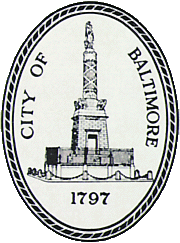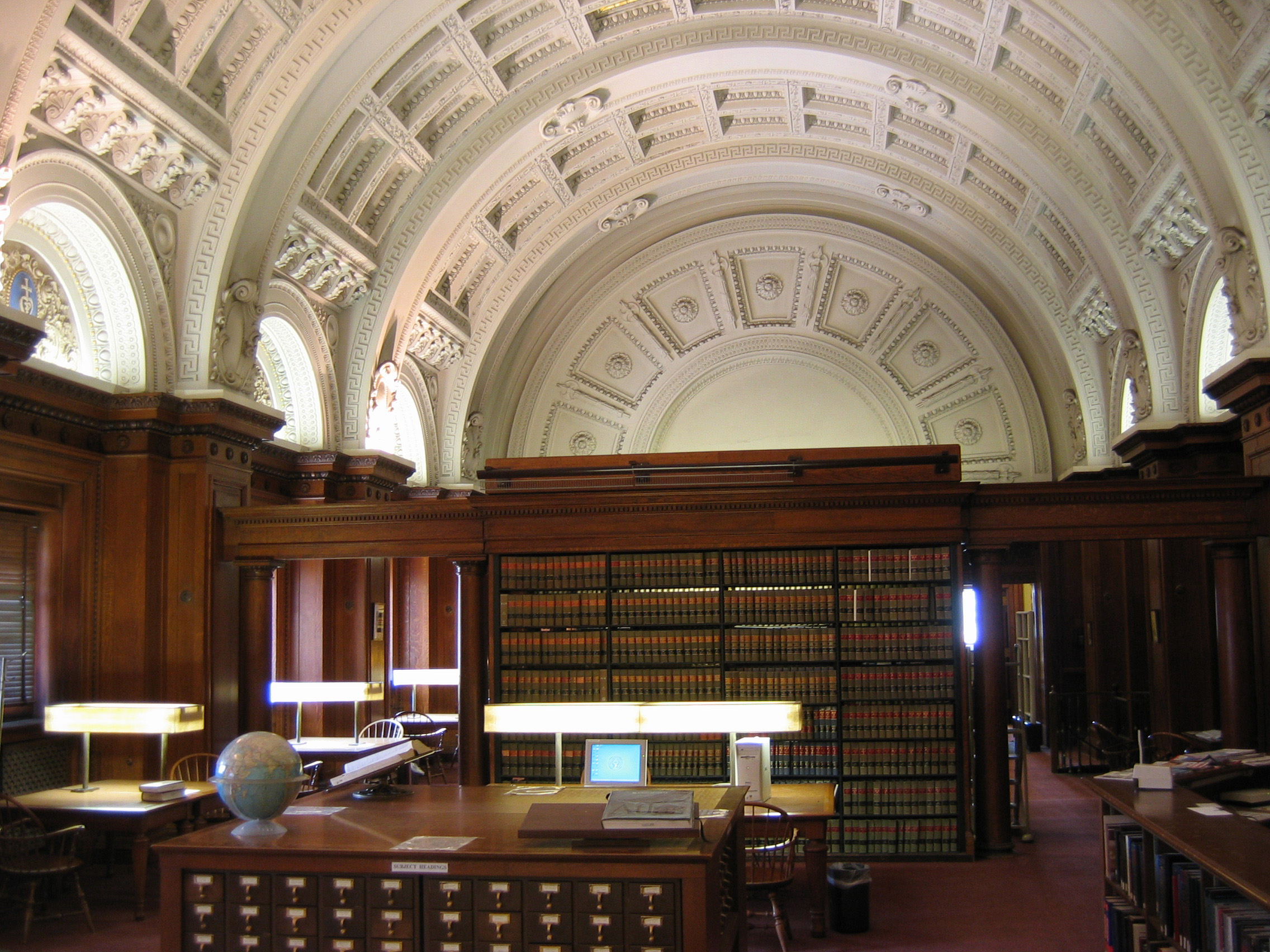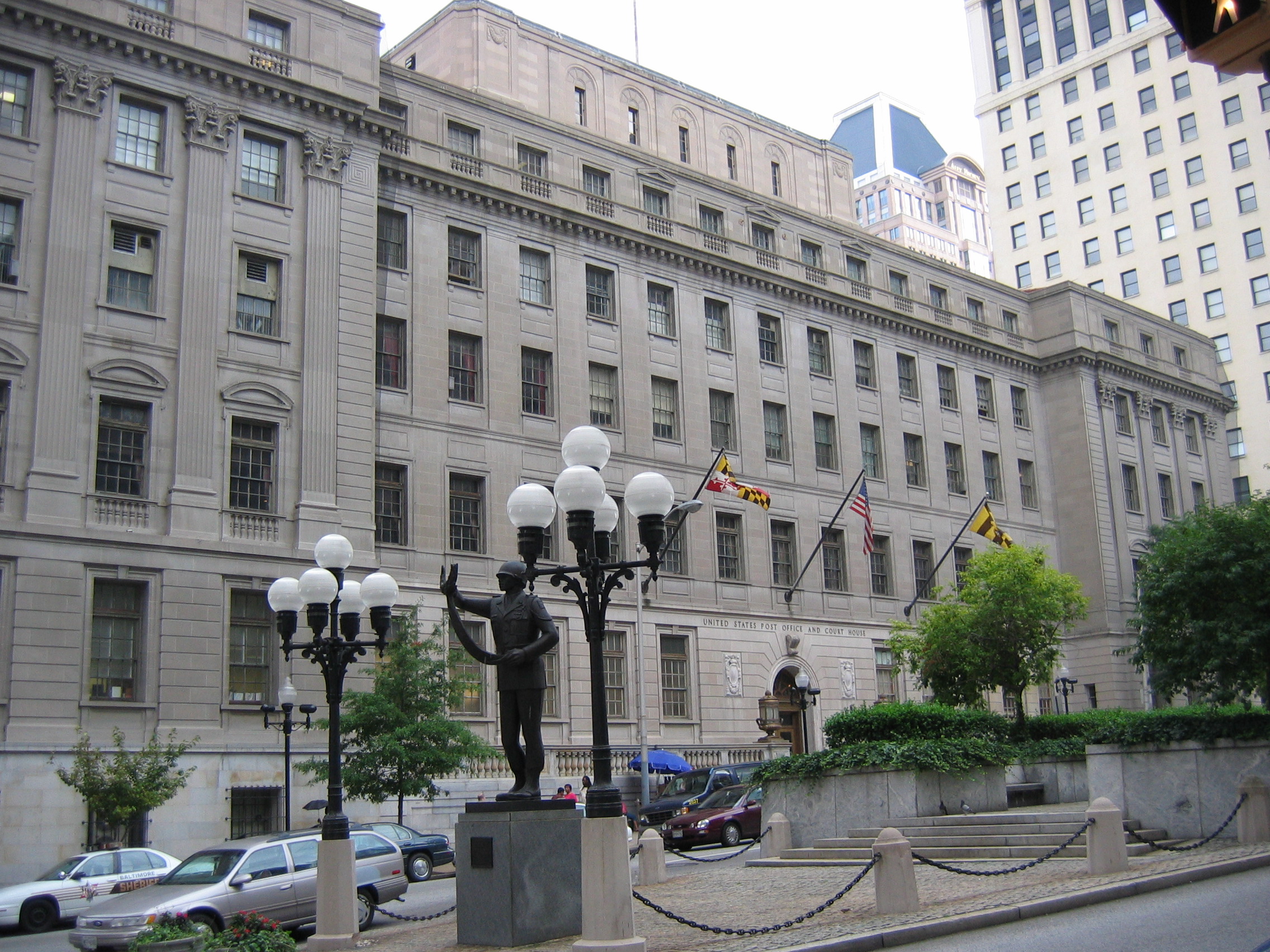The idea of preserving and properly documenting the portrait paintings
and their locations was first championed by Joseph R. Byrnes in 1936 , then
a deputy clerk, who would later become an Associate Judge of the Supreme Bench
of Baltimore City, a Maryland Senator and president of the Maryland Senate.
In subsequent years, this cause was furthered by his son the Hon. John Carroll
Byrnes, along with the Hon. James F. Schneider, and the Hon. M. Brooke Murdock.
Judge Schneider, as historian and archivist of the Court, amassed a tremendous
amount of information about the individual portraits and their provenances,
forming the nucleus of a historical catalogue of the collection. Today, the
art collection continues to be preserved and enlarged under the direction
of The Baltimore Courthouse and Law Museum Foundation, Inc.
In recent years, the Portrait Committee of the Baltimore City Circuit Court
has sought the expertise of museum professionals to advise on the display
and preservation of these important historical works of art. In the summer
of 2004, to enhance public access to the collection, the Court sponsored an
internship at the Maryland State Archives to create a catalogue of the portrait
collection. As part of this project, each portrait was digitally photographed
and complete biographical information about the subject was assembled.
Not every judge who presided on the Sumpreme Bench and Circuit Courts
of Baltimore City were honored by having a portrait painting of their likeness
on display at the courthouses. However,
photographs of past and current judges
adorn the fourth, fifth and sixth floors of the Clarence M. Mitchell, Jr.
Courthouse.
The dimensions indicated in this catalog include the portraits and their
frames. Many of the portraits on display in the courthouses are of judges
and lawyers considered to be the leading legal minds of their day. These honored
men were named by a courthouse committee as the pre-eminent Maryland lawyers
and judges of the 18th and 19th Centuries. The names of these pre-eminent
men are inscribed around the plaster frieze at the base of the dome of the
Supreme Bench courtroom in the Clarence M. Mitchell Jr. Courthouse.
As part of the centennial celebration of the Clarence M. Mitchell Jr. Courthouse,
forty-eight judges and lawyers were honored as the preeminent Baltimore lawyers
and judges of the 20th century. A board of 22 respected members of the Baltimore
bench and bar made the selections. To be eligible for nomination several
factors were established: the honoree had to be deceased; the nominee needed
to have a significant connection to Baltimore City; and the nominee not only
had to excel in the legal profession, but also had to have performed meaningful
public good outside of the profession itself.
Research and design by Christopher J. Kintzel, Registrar, Special Collections



